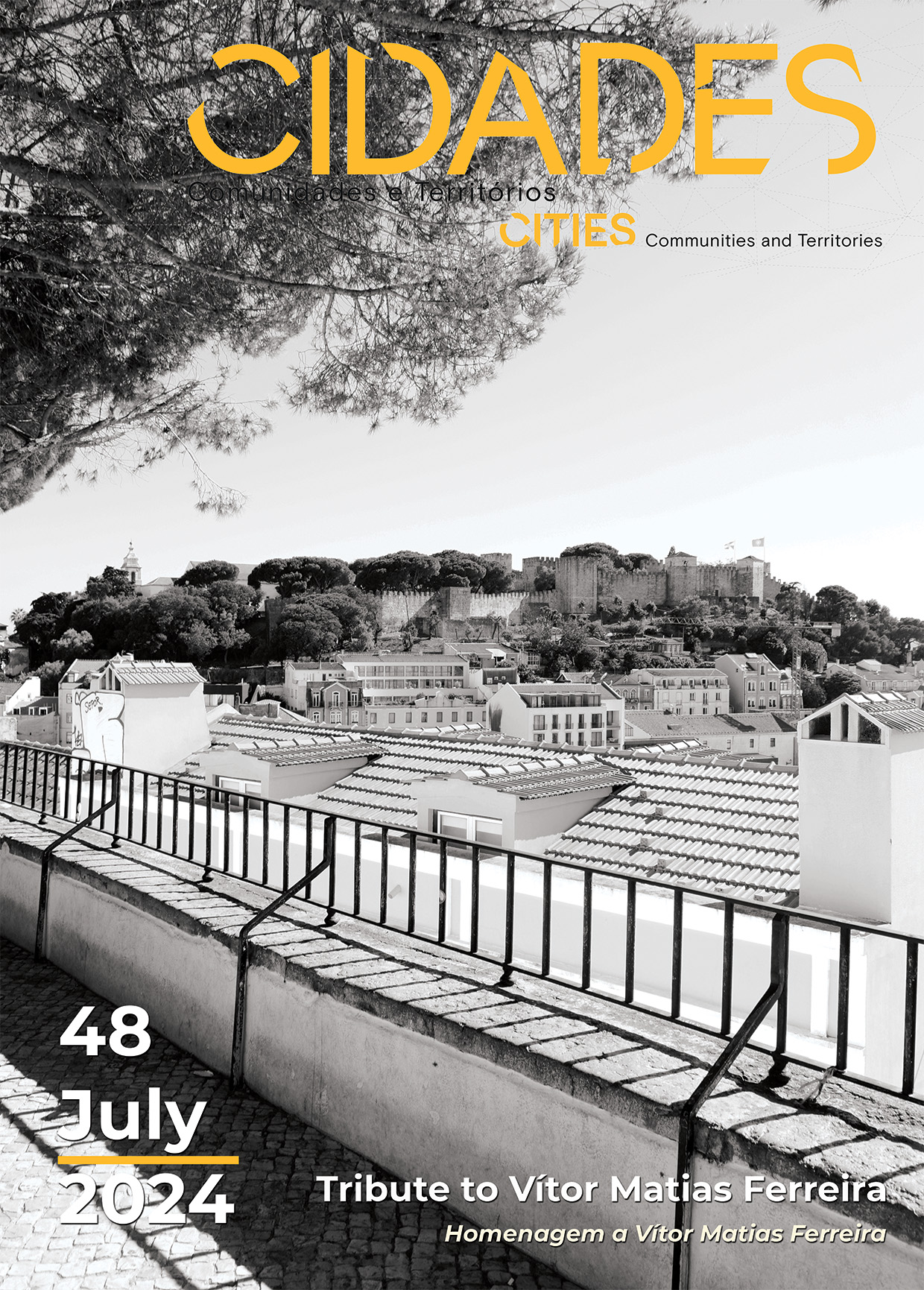Creative dynamics in districts of large Brazilian metropolises: Botafogo (RJ) and Santa Tereza (BH)
Keywords:
cultural quarters, urban planning, urban economy, Brazilian metropolisesAbstract
The article addresses the relationship between creative activities and urban space through a comparative perspective between two neighborhoods, renowned for their creative dynamics, located in two Brazilian metropolises: Botafogo (Rio de Janeiro) and Santa Tereza (Belo Horizonte). The objective is to analyze how social, economic, cultural, institutional and urban characteristics shape the development of creative economy in these neighborhoods, engendering districts marked by agglomerations of firms and creative workers. Based on literature on productive clusters and cultural quarters, we developed a framework with nine categories: origin; evolutionary trajectory; connections; relational density; activities; built form; meaning; conflicts; and governance. The qualitative methodological procedures of this research included semi-structured interviews with entrepreneurs, professionals, and public managers and urban landscape photographic analysis. Botafogo and Santa Tereza are old neighborhoods in Rio de Janeiro and Belo Horizonte and both stand out in the creative ecosystem of their cities. However, the flourishing processes of their creative activities are different, since Santa Tereza has greater historical and symbolic recognition than Botafogo, which went through a more recent process of development of these activities due to its social and economic characteristics. The obtained results show that cultural and creative districts can be developed by different processes and that governance mechanisms need to be improved to mediate some conflicts in favor of the sustainability of the cultural quarters. Finally, we hope to contribute to urban planning and creative economy development.
References
Arthur, B. (1990). Positive feedbacks in the economy. Scientific American, 262(2), 92-99. https://www.jstor.org/stable/24996687
Braun, V., Clarke, V. (2006). Using thematic analysis in psychology. Qualitative Research in Psychology, 3(2), 77-101. https://www.tandfonline.com/doi/abs/10.1191/1478088706qp063oa
Corrêa, S. B., Dubeux, V. J. C. (2021). Transformações urbanas e empreendedorismo criativo: o caso do Soho Botafogo (Rio de Janeiro). In M. X. N. Pereira & E. Agrelo-Costas (Eds.), Cidadanía e identidades: expresións políticas, económicas e culturais no século XXI (1st ed., pp. 37-54). Universidade de Santiago de Compostela.
Costa, P. & Lopes, R. (2013). Urban design, public space and creative milieus: an international comparative approach to informal dynamics in cultural districts. Cidades, Comunidades e Territórios, 26, 40-66. https://revistas.rcaap.pt/cct/article/view/9070
Costa, P. & Lopes, R. (2015). Urban Design, Public Space and the Dynamics of Creative Milieux: A Photographic Approach to Bairro Alto (Lisbon), Gràcia (Barcelona) and Vila Madalena (São Paulo). Journal of Urban Design, 20(1), 28-51. https://doi.org/10.1080/13574809.2014.991382
Duarte, J. (2006). Entrevista em profundidade. In Jorge Duarte & Antonio Barros (Eds.). Métodos e técnicas de pesquisa em comunicação. (1st ed., pp. 62-83). Atlas.
Florida, R. (2002). The Rise of the Creative Class. Basic Books.
Komorowski, M. & Picone, I. (Eds.). (2020). Creative Cluster Development: Governance, Place-Making and Entrepreneurship. Routledge.
Landry, C. (2008) The creative city: A Toolkit for Urban Innovators. Earthscan.
Lazzeretti, L., Boix, R. & Capone, F. (2013). Why do Creative Industries Cluster?. In: Lazzereti, L. (Ed.). Creative Industries and Innovation in Europe: Concepts, Measures and Comparative Studies. Routledge, pp. 45-64.
Martin, R. (2010). Roepke Lecture in Economic Geography. Rethinking Regional Path Dependency: Beyond Lock-in to Evolution. Economic Geography, 86(1), 1-27. https://www.jstor.org/stable/27806893
Montgomery, J. (2003) Cultural Quarters as Mechanisms for Urban Regeneration. Part 1: Conceptualising Cultural Quarters. Planning, Practice & Research, 18(4), pp. 293-306. https://doi.org/10.1080/1561426042000215614
Neves, L. (2010). Santa Tereza. Conceito.
North, D. (1990). Institutions, Institutional Change and Economic Performance. Cambridge University Press.
Prefeitura da Cidade do Rio de Janeiro / Instituto Pereira Passos. (2022). Índice de Progresso Social no Rio de Janeiro: IPS Rio de Janeiro. https://ips-rio-pcrj.hub.arcgis.com/documents/0431a6811e834acf988d0bffc6def65f/explore
Roodhouse, S. (2010). Cultural Quarters. Principles and Practice. Intellect.
Scott. A. J. (2005). On Hollywood: the Place, the Industry. Princeton University Press.
Stachowiak, K. (2020). Interplay of the Local and the Global in Connecting Creative Clusters Around the Globe. In: Komorowski, M. and Picone, I. (Eds.). (2020). Creative Cluster Development: Governance, Place-Making and Entrepreneurship. Routledge, pp. 66-82.
Storper, M. (2013). Keys to the City: How Economics, Institutions, Social Interaction and Politcs Shape Development. Princeton University Press.
Vicente, J. (2018). Economics of Clusters: a Brief History of Cluster Theories and Policy. Palgrave Macmillan.
Vivant, E. (2009). Qu’est ce que la Ville Créative? Presses Universitaires de France.
Downloads
Published
Issue
Section
License
Copyright (c) 2023 João Luiz de Figueiredo, Ana Flávia Machado, Mariangela Furlan Antigo, Sílvia Borges Corrêa, Veranise Jacubowski Dubeux

This work is licensed under a Creative Commons Attribution-NonCommercial-NoDerivatives 4.0 International License.
Cidades, Comunidades e Territórios by DINÂMIA'CET-IUL is licensed under a Creative Commons Atribuição-Uso Não-Comercial-Proibição de realização de Obras Derivadas 4.0 Unported License.Permissions beyond the scope of this license may be available at mailto:cidades.dinamiacet@iscte.pt.






